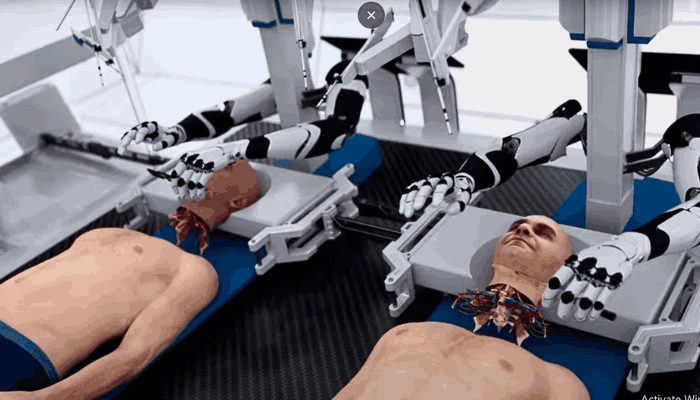Science Fiction or the Future of Medicine?
A recent video from BrainBridge, a trailblazing neuroscience and biomedical engineering startup, has set the internet ablaze with a mind-bending simulation of a head transplant. Featuring two autonomous surgical robots performing simultaneous surgeries on two robotic bodies, the video has sparked a frenzy of intrigue and debate.
But BrainBridge’s ambitious goal is no mere fantasy – they aim to provide a glimmer of hope for those battling untreatable conditions like stage-4 cancer, paralysis, and devastating neurodegenerative diseases.
BrainBridge’s Audacious Dream of Head Transplant
After all, BrainBridge’s head transplant procedure is a daring attempt to give patients a second chance at life.
Nonetheless, By transplanting a person’s head onto a healthy, brain-dead donor body, they hope to preserve the essence of who we are – our consciousness, memories, and cognitive abilities.
This Stealth Startup is now ready to share its Vision. This is a Vision of offering a new lease on life to those facing the darkest of prognoses.
Head Transplant : The Science Behind the Sci-Fi
BrainBridge’s head transplant system is a marvel of advanced robotics, artificial intelligence (AI), and real-time molecular-level imaging.
High-speed robotic systems work tirelessly to prevent brain cell degradation. Thus, they ensure a perfect match between the transplanted head and donor body.
Their secret weapons? A proprietary chemical adhesive and polyethylene glycol that help reconnect severed neurons. Similarly, AI algorithms guide the surgical robots in the delicate task of reconnecting the spinal cord, nerves, and blood vessels.
Overcoming Obstacles, Pushing Boundaries
One of the biggest hurdles in head transplant surgery is the inability to fully repair nerve and spinal cord damage.
But regardless of this complexity, BrainBridge is not the one to shy away from this challenge. Infact, they’re actively recruiting the best and brightest specialists to tackle this problem head-on and accelerate progress in whole-body transplantation.
After all, by fostering a collaborative environment and attracting the world’s top minds, the company aims to push the boundaries of medical science and achieve breakthroughs in spinal cord reconstruction and head transplant techniques.
Ethical Dilemmas and Open Dialogue
In general, the concept of a head transplant raises a host of ethical questions. Moreover, Critics argue that the technology is meddling in natural processes and could be exploited unethically. But BrainBridge is quick to point out that their approach is grounded in rigorous scientific research and adheres to the highest ethical standards.
They’re committed to engaging in open dialogue with the scientific community, policymakers, and the public to address these concerns head-on.
A Brief History of Head Transplants
The idea of head transplantation is not as new as you might think. Early attempts date back to the early 1900s, with the first recorded head transplant on a dog in 1908.
In the 1950s, Dr. Vladimir Demikhov created two-headed canines through his experiments. In the 1970s, Dr. Robert White performed a head transplant on a rhesus monkey, which survived for eight days but couldn’t move due to the inability to reconnect the spinal cord.
More recently, neurosurgeon Sergio Canavero claimed to have performed a human head transplant, though this claim remains controversial.
A Future Where Anything is Possible
BrainBridge’s innovative approach to head transplantation has the potential to transform healthcare as we know it, offering a glimmer of hope to those facing the bleakest of prognoses.
If their feasibility results are positive, the first head transplant surgery could be performed within eight years. This breakthrough could mark a giant leap forward in medical science, changing lives and expanding the boundaries of what advanced medical technologies can achieve.
As BrainBridge continues to push the boundaries of what’s possible, the world watches with a mix of excitement and trepidation, wondering if this audacious quest will indeed become a reality and pave the way for future medical miracles. One thing’s for sure – this is not your average startup, and they’re not afraid to dream big.
Watch here : Brainbridge’s Machine for Head Transplant
Also Read : Gene Therapy shows Promising Signs for Treating Brain Disorders




